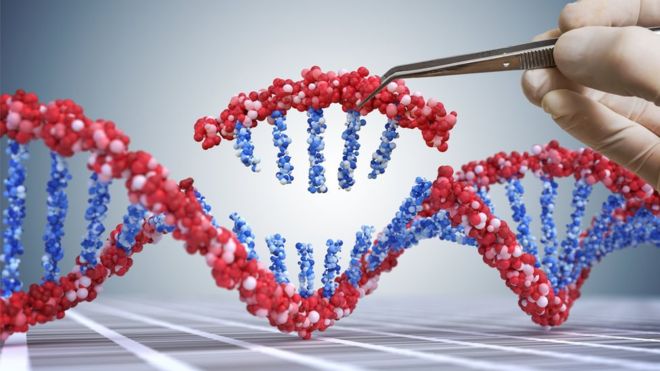The technology, called prime editing, has been described as a "genetic word processor" able to accurately re-write the genetic code.
It has been used to correct damaging mutations in the lab, including those that cause sickle cell anaemia.
The team at the Broad Institute say it is "very versatile and precise", but stress the research is only starting.
Can't we already edit DNA?
Prime editing is the latest advance in the field of gene editing, which is developing at an incredible pace.
Our DNA is the instruction manual for building and running our bodies. It is in nearly every one of our cells.
Being able to tweak DNA through gene editing is already transforming scientific research, promising to revolutionise medicine and asking deep moral and ethical questions after the creation of babies who were gene-edited to have protection from HIV.
Much of the excitement has centred on a technology called Crispr-Cas9, which was developed just seven years ago.
It scans DNA for the right spot and then, like a microscopic pair of scissors, cuts it in two.
This creates the opportunity to edit the DNA.
However, the edits are not always perfect and the cuts can end up in the wrong place. Both issues are a problem for using the technology in medicine.
The promise of prime editing is precision.
How does prime editing work?
The study, in the journal Nature, used prime editing to accurately insert or delete sections of DNA; as well as correct typos in a single "letter" out of the three billion that make up the human genetic code.
One of the researchers, Dr David Liu, said: "You can think of prime editors to be like word processors, capable of searching for target DNA sequences and precisely replacing them.
"Prime editors offer more targeting flexibility and greater editing precision."
Prime editing is like pressing Ctrl-F to find the bit of text you want to change, then pressing Ctrl-C and Ctrl-V to copy over the new text (or the command key if you're a mac user).
The technology uses a lab-made sequence of genetic code. This has two roles, one is to find the specific part of the DNA you want to edit and the other contains the change you want to make.
This is paired with an enzyme (called a reverse transcriptase) which copies the relevant edits over into the DNA.
It was developed by researchers at the Broad Institute of MIT and Harvard in Massachusetts.
How can prime editing treat disease?
The fundamental building blocks of DNA are the four bases adenine, cytosine, guanine and thymine. They are commonly known by their respective letters, A, C, G and T.
Three billion of these letters form the complete manual for building and maintaining the human body, but seemingly tiny errors can cause disease.
A mutation that turned one specific A into a T results in the most common form of sickle cell disease.
Tay-Sachs disease, a rare and fatal nerve condition, is often caused by the addition of four extra letters of code.
Prime editing has been used to reverse both genetic errors in experiments on human cells in the laboratory.
There are around 75,000 different mutations that can cause disease in people. Dr Liu estimates prime editing has the potential to fix 89% of them.
The other 11% include times when people have too many copies of a gene (a genetic instruction) or when the whole gene is missing.
"Prime editing is the beginning, rather than the end of a long-standing aspiration in the molecular life-sciences to be able to make any DNA change in any position of a living cell or organism, including potentially human patients with genetic diseases," Dr Liu said.
How long will it take?
The challenge - as with all other gene editing technologies - will be getting the molecular machinery that is capable of performing these edits into the right parts of the human body and to ensure they are safe.
Like other gene-editing technologies, it is likely the first applications will be in diseases where cells can be taken out of the body, edited, checked to ensure they are safe and put back in.
That would apply to some blood disorders like sickle cell or thalassemias, where bone marrow can be removed and put back in.
"We may be able to 'fix' known human variants associated with disease, but the ability to do so in the right cell type and in a clinically relevant manner may be some time away," said Dr Hilary Sheppard, from the University of Auckland.
What do the experts think?
Prof Robin Lovell-Badge, from the Francis Crick Institute, told BBC News: "This is an excellent paper, typical of the careful step-by-step, clever and inventive approach used by David Liu.
"Because the vast majority of human genetic diseases are due to the types of mutation that prime editing can correct, the methods will hopefully prove useful in therapies for such diseases.
"Of course, much more work will be needed to optimise the methods and to find ways to deliver the components efficiently before they could be used clinically to treat patients, but they certainly offer promise.
Dr Helen O'Neill, from UCL, said: "This exciting research displays yet another expansion of the genome editing toolbox which allows for ever-more precise editing ability and efficiency.
"The research has been verified in vitro in human cells with an impressive 175 different editing examples including some of the more difficult to edit diseases."
BBC
More about: DNA
















































